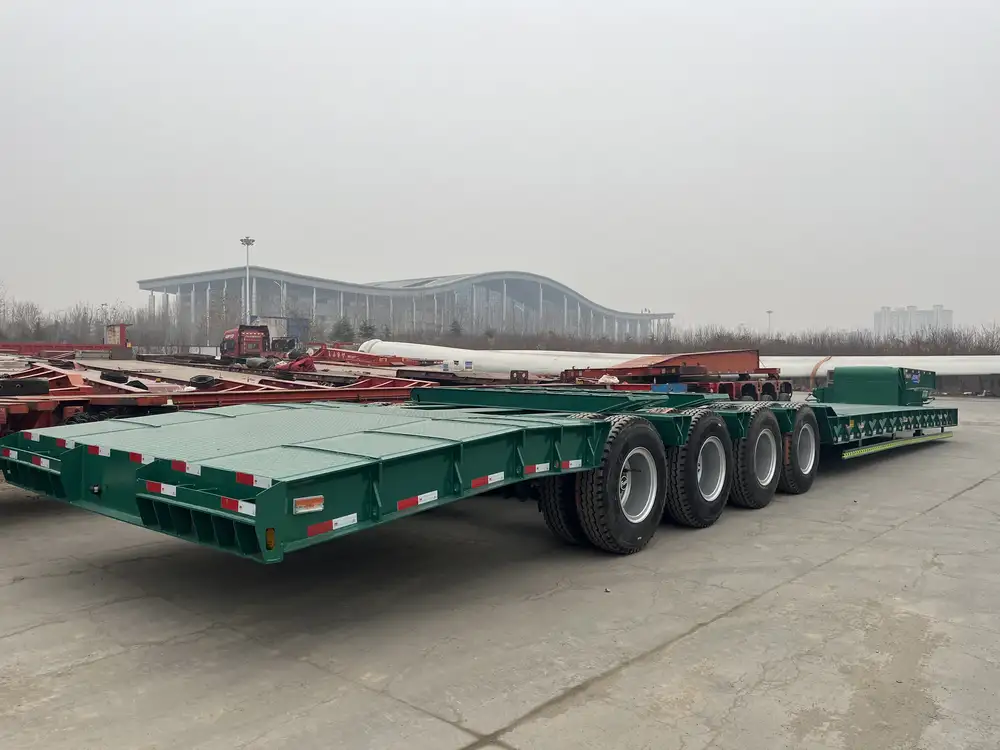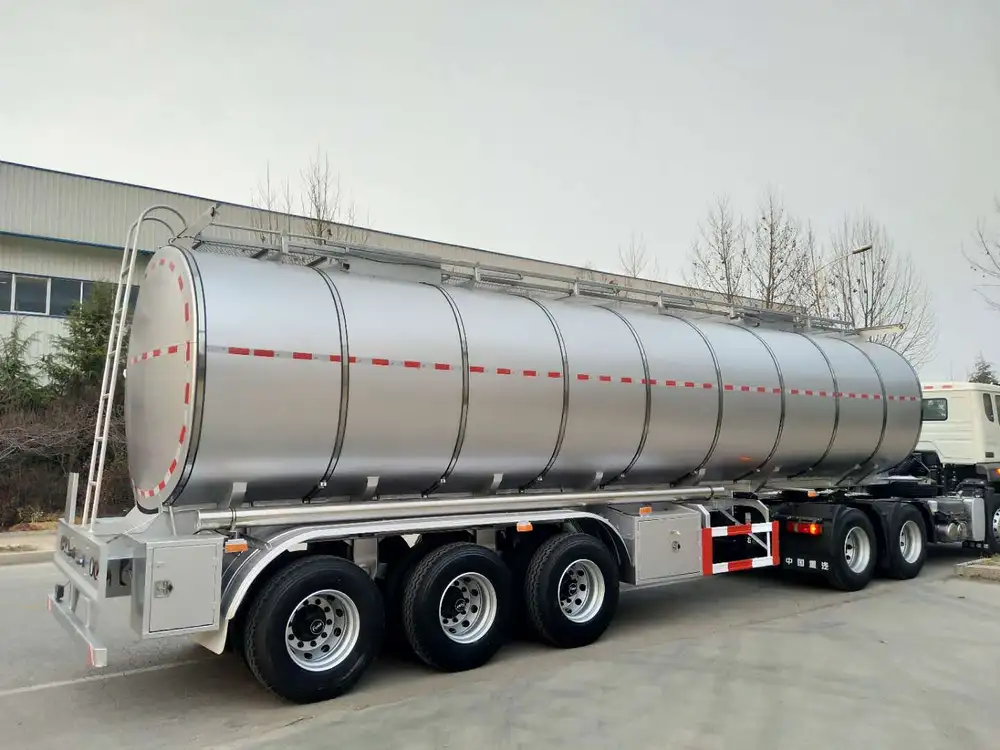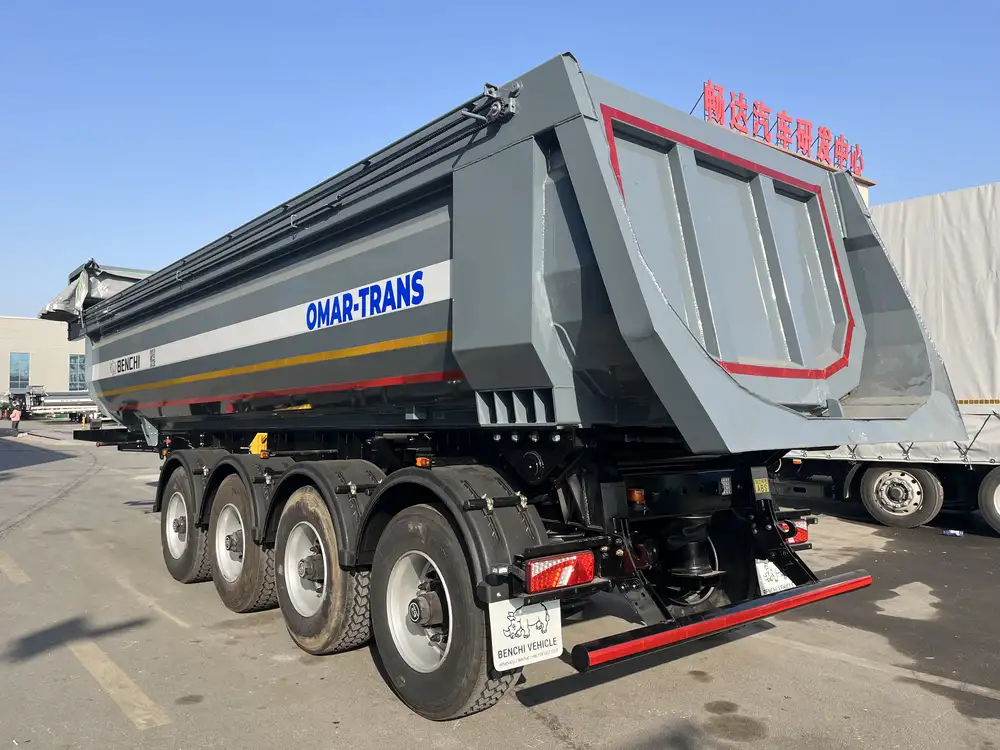In the transport and logistics industry, understanding the dimensions of vehicles is crucial for efficiency, compliance, and safety. Today, we will delve into the specifics of dump trucks and trailers, exploring their lengths, typical configurations, and the considerations that affect these measurements.
Understanding Dump Truck Configurations
1. Types of Dump Trucks
Dump trucks come in various styles, each offering distinct advantages based on their size, payload capability, and operational use. The main types include:
| Type | Description | Typical Length |
|---|---|---|
| Standard Dump Truck | A traditional model primarily used for construction and bulk materials transport. | 20-25 feet |
| Articulated Dump Truck | Often used in rough terrain, featuring a pivot point between the truck and trailer. | 25-30 feet |
| Volume Dump Truck | Designed for transporting large volumes of materials, often larger and heavier. | 25-30 feet |
| Side Dump Truck | Allows for lateral unloading of contents, providing faster unloading times. | 20-25 feet |
| Grab Truck | Equipped with a crane, used for picking up and transporting waste materials and debris. | 24-30 feet |

2. Key Dimensions and Metrics
When discussing lengths, it’s important to consider several factors that can influence the overall dimensions of a dump truck and its trailer:
- Chassis Length: Standard configurations can range from 13 to 20 feet.
- Dump Bed Length: Commonly spans from 10 to 18 feet, affecting the overall length.
- Trailer Length: Semi-trailers extended for attached dump trucks typically measure between 25 to 53 feet.
- Total Length: The combined length can reach unprecedented values, often exceeding 75 feet when considering the truck, trailer, and load.
Factors Influencing Length Requirements
1. Load Characteristics
The type of materials transported determines not only trailer type but also dimensions. Aggregate materials, liquids, and bulk items may dictate specific trailer designs impacting overall lengths.

2. Regulatory Standards
Adhering to local and federal regulations is critical. For instance, in the United States, maximum vehicle length regulations are enforced:
| Region | Maximum Length (feet) |
|---|---|
| Federal Law | 53 (for trailers) |
| California | 65 (overall truck/trailer) |
| Texas | Up to 75.5 |
Understanding these regulations is vital for manufacturers and operators in the industry to remain compliant.
Dump Truck Specifications Overview
The interplay between dump truck and trailer dimensions can be summarized as follows:
| Specification | Dimension Range |
|---|---|
| Overall Length | Up to 75+ feet |
| Weight Capacity | 15-30 tons (depending on type) |
| Height (dump bed up) | 10-12 feet |
| Width | 8-8.5 feet |
3. Trailer Types and Their Lengths
The accompanying trailer also contributes significantly to the overall length. Here’s a detailed breakdown of trailer types:
| Trailer Type | Length Range | Usage |
|---|---|---|
| Standard Flatbed | 48-53 feet | Versatile loading options |
| Lowboy Trailer | 28-48 feet | Hauling heavy equipment |
| Drop Deck Trailer | 48-53 feet | For oversized loads |

Tips for Buyers: Choosing the Right Length and Configuration
1. Identify Purpose and Load
Understand the primary function your dump truck and trailer will serve. Whether it’s construction, waste management, or agriculture, knowing your requirements is crucial.
2. Evaluate Load Types and Weights
Assess the type and weight of materials that you are planning to transport. This helps in determining both the dimensions and specifications of the desired vehicle.

3. Ensure Compliance with Local Regulations
Always check municipal requirements concerning vehicle dimensions. Adhering to regulations is critical for safe operation and avoiding fines.
4. Consider Maneuverability
Larger vehicles may be unwieldy in tight areas. Assessing your required route and loading/unloading zones can influence your choice.
5. Opt for Quality over Size
While a longer trailer may seem appealing, also consider the build quality and specifications. A well-built, shorter vehicle may outperform a longer one.

How to Measure Your Dump Truck and Trailer Properly
When measuring the length of a dump truck and its trailer, follow these steps carefully:
- Use a Measuring Tape: Ensure accuracy by using a high-quality measuring tape.
- Measure from the Front Bumper to the Rear End of the Trailer: For length, measure from the tip of the front bumper to the end of the trailer.
- Take Note of the Dump Bed Length: If applicable, measure the actual length of the dump bed itself.
- Document Any Changes in Load or Trailer Type: If attachments are involved, measure them as well.
By adhering to these protocols, accuracy in dimensional assessments can be achieved, aiding in compliance and efficiency.
Safety Considerations for Length and Size
1. Load Overhang
Any load extending beyond the trailer can affect stability. It’s essential to have proper signage and equipment to mark excess length.

2. Height Restrictions
Dump trucks and trailers have varying height specifications that can lead to clearance issues under bridges and low overhangs.
3. Weight Distribution
Proper load distribution significantly impacts the maneuverability and braking efficiency of the vehicle. It’s critical to ensure balanced loads.
4. Visibility
Operational safety is paramount; ensure that all dimensions, including trailer length, do not impede visibility for effective driving.

Conclusion
Understanding the dimensions of dump trucks and trailers—including how long they are—can significantly impact operational efficiency in the transport industry. Whether you’re considering purchasing or merely seeking to understand the specific requirements for your operations, this knowledge fosters better decision-making.
By considering load types, regulatory environments, and safety factors, operators can optimize their fleets for enhanced performance and compliance. The interplay between dump truck and trailer lengths ultimately dictates not just the functionality but the safety of your operations.
By maintaining a robust grasp of these critical measurements and considerations, stakeholders can ensure their operations run smoothly, staying within regulatory confines while maximizing efficiency and safety in the transporting of goods.



